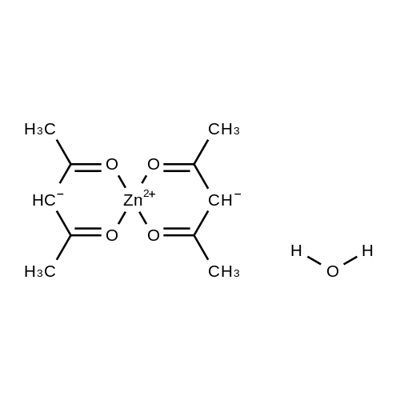Zinc , Stick -shaped, 99.9999%MetalsBasis , 7440-66-6
Synonym(s):
Granular Zinc;Zinc;Zinc 20 Mesh
CAS NO.:7440-66-6
Empirical Formula: Zn
Molecular Weight: 65.39
MDL number: MFCD00011291
EINECS: 231-175-3
PRODUCT Properties
| Melting point: | 420 °C(lit.) |
| Boiling point: | 907 °C(lit.) |
| Density | 7.14 g/mL at 25 °C |
| bulk density | 1800-2700kg/m3 |
| vapor pressure | 1 mm Hg ( 487 °C) |
| Flash point: | 1 °F |
| storage temp. | 2-8°C |
| solubility | H2O: soluble |
| form | wire |
| Specific Gravity | 7.14 |
| color | Silvery-gray |
| Flame Color | Colorless to blue-green |
| Odor | at 100.00?%. odorless |
| Resistivity | 5.8 μΩ-cm, 20°C |
| Water Solubility | Soluble in water. |
| Sensitive | Air & Moisture Sensitive |
| Merck | 14,10132 |
| Exposure limits | ACGIH: TWA 2 ppm; STEL 4 ppm OSHA: TWA 2 ppm(5 mg/m3) NIOSH: IDLH 25 ppm; TWA 2 ppm(5 mg/m3); STEL 4 ppm(10 mg/m3) |
| Stability: | Stable. Incompatible with amines, cadmium, sulfur, chlorinated solvents, strong acids, strong bases. Air and moisture sensitive. Zinc powder is very flammable. |
| InChIKey | HCHKCACWOHOZIP-UHFFFAOYSA-N |
| CAS DataBase Reference | 7440-66-6(CAS DataBase Reference) |
| NIST Chemistry Reference | Zinc(7440-66-6) |
| EPA Substance Registry System | Zinc (7440-66-6) |
Description and Uses
Zinc (Zn) is a metallic element discovered by a German chemist, Andreas Marggraf, in 1746. It is environmentally ubiquitous and essential for life. It exhibits a strong tendency to react with both organic and inorganic compounds. Zinc is the 24th most abundant element, constitutes 0.027% bw of the Earth’s crust, and has five stable isotopes. The largest mineable amounts are found in Australia, Asia, and the United States. A recent estimate suggests that approximately 20% of the world’s population is at risk of Zn deficiency. However, free access to uncontrolled amounts of Zn in nutritional supplements is the most common cause of Zn excess. Both Zn deficiency and Zn excess contribute to human Zn toxicity.
Zinc is a constituent of many common alloys,including brass, bronze, Babbit metal, andGerman Silver. It is used to make householdutensils, castings, printing plates, buildingmaterials, electrical apparatus, dry-cell batteriesand many zinc salts. It is also used to galvanize sheet iron, bleaching bone glue andas a reducing agent in many organic reactions.
Safety
| Symbol(GHS) |     GHS02,GHS07,GHS08,GHS09 |
| Signal word | Danger |
| Hazard statements | H225-H302-H319-H335-H336-H351-H411 |
| Precautionary statements | P202-P210-P273-P301+P312-P305+P351+P338-P308+P313 |
| Hazard Codes | N,F,Xi,Xn |
| Risk Statements | 52/53-50/53-17-15-36/37/38-51/53-36/37-22-19-40-11 |
| Safety Statements | 26-61-60-46-43-36-36/37-16 |
| RIDADR | UN 3264 8/PG 3 |
| WGK Germany | 3 |
| RTECS | ZH1400000 |
| F | 3 |
| Autoignition Temperature | 460 °C |
| TSCA | Yes |
| HS Code | 7904 00 00 |
| HazardClass | 8 |
| PackingGroup | III |
| Hazardous Substances Data | 7440-66-6(Hazardous Substances Data) |
| Toxicity | Zinc is an essential nutrient and is not regarded as toxic. However, the metal fumes, its oxide fumes, and chloride fumes can produce adverse inhalation effects. (See Zinc Oxide and Zinc Chloride, Toxicity) Ingestion of soluble salts can cause nausea. |






